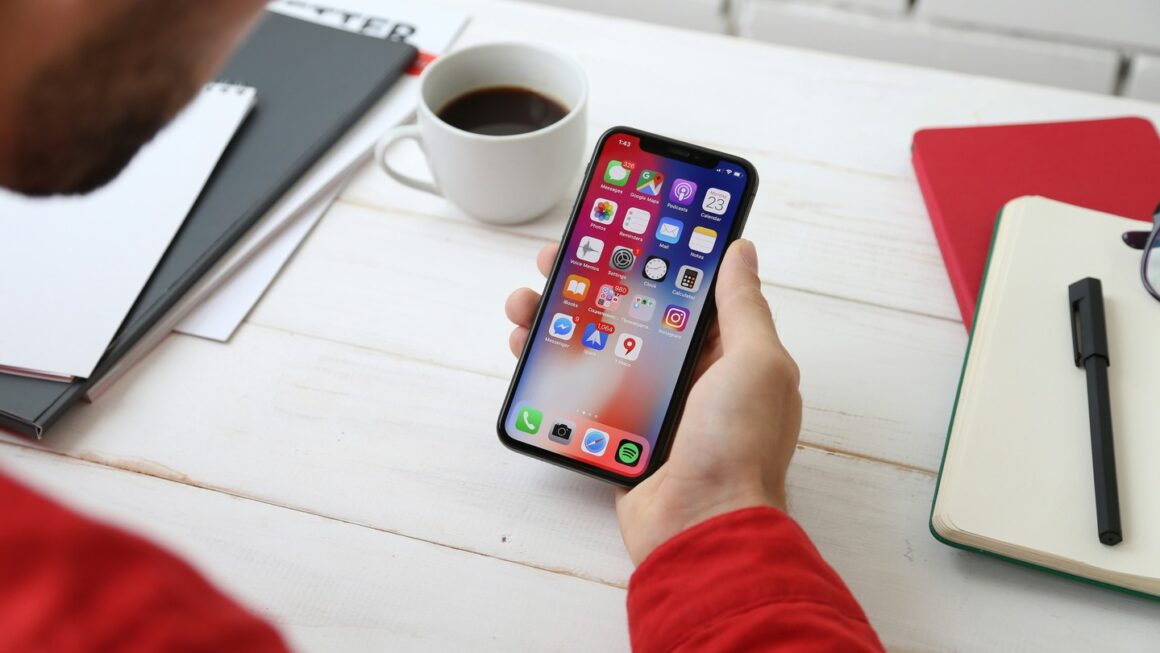1. Introduction
In an era where smartphones have become an extension of ourselves, encountering app crashes on an iPhone can disrupt our daily routines and productivity. For many iPhone users, these issues are not just minor inconveniences but significant obstacles that hinder the seamless use of essential apps for communication, work, entertainment, and more. Addressing these crashes promptly not only enhances the user experience but also ensures the reliability and efficiency of your device.
The journey to resolving iPhone app crashes requires a blend of simple tweaks and, at times, more in-depth troubleshooting techniques. Whether it’s an app that suddenly stops and returns you to the home screen or one that freezes and becomes unresponsive, understanding the underlying causes is the first step toward finding a solution. This guide aims to equip iPhone users with practical tips and solutions for fixing persistent app crashes, ensuring that your device operates smoothly, and you can enjoy your digital experiences without interruption.
In the following sections, we’ll delve into the types of app crashes, explore common causes, and offer a comprehensive set of solutions ranging from basic fixes to advanced troubleshooting methods. By the end of this guide, you’ll have a thorough understanding of how to address and prevent app crashes on your iPhone, ensuring a more stable and enjoyable user experience.
2. Understanding App Crashes on iPhone
2.1 Types of App Crashes
App crashes on an iPhone can manifest in a couple of different ways, each indicating a unique problem that requires a tailored solution. The first type is the unexpected closure, where an app suddenly quits and returns you to the home screen. This typically happens without warning and is often due to memory issues, software bugs, or compatibility problems.
The second type is the freeze, where an app becomes unresponsive but remains open on the screen. This scenario usually involves a problem within the app itself, such as a looped process or an overwhelmed cache. Both situations are frustrating but understanding the distinction helps in diagnosing and fixing the underlying issue more effectively.
2.2 Common Causes of App Crashes
- Outdated Apps and iOS: Running outdated versions of apps or the iOS can lead to crashes due to unpatched bugs and compatibility issues with newer software technologies.
- Insufficient Storage Space: iPhones with almost full storage have less space for apps to store temporary files, leading to crashes. Managing your device’s storage can sometimes resolve these issues.
- Software Bugs and Glitches: Bugs within the app or the iOS can cause crashes. These are usually fixed with updates from developers or Apple.
- Hardware Issues: Although less common, hardware problems can also lead to app crashes, especially if your iPhone has sustained physical damage.
- Overheating: iPhones that get too hot may shut down apps to prevent damage to the internal components.
- Compatibility Issues: Some apps may not be optimized for your iPhone model or the current version of iOS, leading to performance issues and crashes.
Understanding these common causes provides a solid foundation for troubleshooting app crashes. The next step involves applying this knowledge to implement solutions that can resolve or mitigate these issues.
3. How to Fix Persistent App Crashes
3.1 Update Your Apps and iOS
Keep Apps Up to Date: Developers frequently release updates to improve app stability and fix bugs. Check the App Store for any available updates for your apps and install them. Automatic updates can be enabled in Settings > App Store, ensuring your apps always run the latest version.
Update iOS: Similarly, Apple releases iOS updates that enhance system stability and security. To check for an iOS update, go to Settings > General > Software Update. If an update is available, download and install it to benefit from the latest improvements and bug fixes.
3.2 Clearing Up Storage Space
Manage Storage: Insufficient storage can lead to app crashes. To free up space, go to Settings > General > iPhone Storage. Here, you can see which apps are using the most space and delete those you no longer need. Consider offloading unused apps, a process that removes the app but retains its data, allowing for easy reinstallation.
Offload Unnecessary Data: Regularly review your photos, videos, and music to delete anything unnecessary. Use iCloud or other cloud services to store files you want to keep but don’t need immediate access to, freeing up local storage on your device.
3.3 Restarting Your iPhone
Soft Reset: A simple restart can fix many temporary glitches causing apps to crash. Press and hold the power button (and volume button on newer models) until the power off slider appears. Slide to turn off, wait a few seconds, then turn your iPhone back on.
3.4 Reinstalling Problematic Apps
Uninstall and Reinstall: If a particular app keeps crashing, try uninstalling and then reinstalling it. This can clear corrupt data that might be causing the issue. Press and hold the app icon, tap “Delete App,” then reinstall it from the App Store.
3.5 Checking for App Compatibility
Compatibility Check: Ensure the app is compatible with your iPhone model and iOS version. Developers usually list these requirements in the app’s description on the App Store. If your device is much older, consider using alternative apps designed for lower specifications.
3.6 Seeking Developer Support and Feedback
Contact Developers: If crashes persist, contact the app developer through the App Store. Provide details about the issue and any steps you’ve already taken to resolve it. Feedback can help developers identify and fix bugs in future updates.
4. Advanced Troubleshooting Techniques
4.1 Resetting All Settings
If the app crashes persist despite updating apps and iOS, clearing storage, and reinstalling problematic apps, resetting all settings on your iPhone might help. This action won’t delete your apps or personal data (like photos, videos, or messages) but will reset system settings to their defaults. This includes Wi-Fi networks, passwords, privacy settings, and more, which could resolve conflicts or issues causing apps to crash.
- To reset all settings: Go to Settings > General > Reset > Reset All Settings. Enter your passcode if prompted and confirm the reset.
4.2 Factory Reset
As a last resort, a factory reset can help fix persistent app crashes by erasing all content and settings from your iPhone, returning it to its original state. This step is drastic and should only be considered if other solutions fail, as it will remove all personal data, apps, and configurations. Before proceeding, ensure you have a recent backup of your iPhone.
- Backup Your iPhone: Use iCloud or iTunes to back up your iPhone. This ensures you can restore your data after the reset.
- To perform a factory reset: Go to Settings > General > Reset > Erase All Content and Settings. Enter your passcode and Apple ID password to confirm the reset. Once the process is complete, you can set up your iPhone as new or restore it from a backup.
Performing a factory reset often resolves the most stubborn issues, including persistent app crashes. However, it’s crucial to backup your data to avoid losing important information.
Conclusion
Persistent app crashes on iPhones can be frustrating, but with the right approach, they can often be resolved. This guide has provided a comprehensive set of solutions, from simple fixes like updating apps and clearing storage to advanced troubleshooting techniques such as resetting all settings and performing a factory reset.
Regular maintenance, like keeping your iOS and apps up to date, managing storage space, and restarting your iPhone periodically, can help prevent many common issues that lead to app crashes. When problems arise, start with the basic solutions before moving on to more advanced troubleshooting steps.
By following this guide, you can ensure your iPhone runs smoothly, allowing you to enjoy a seamless and productive user experience. Remember, if you encounter issues that you cannot resolve, seeking support from Apple or the app developers can provide additional assistance.




